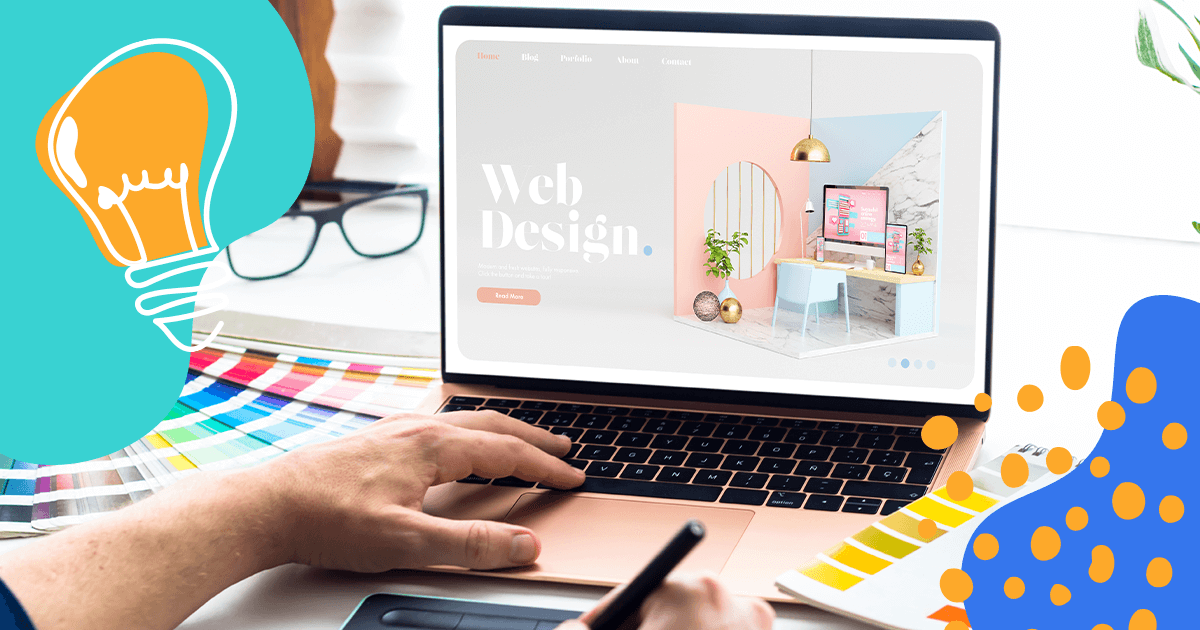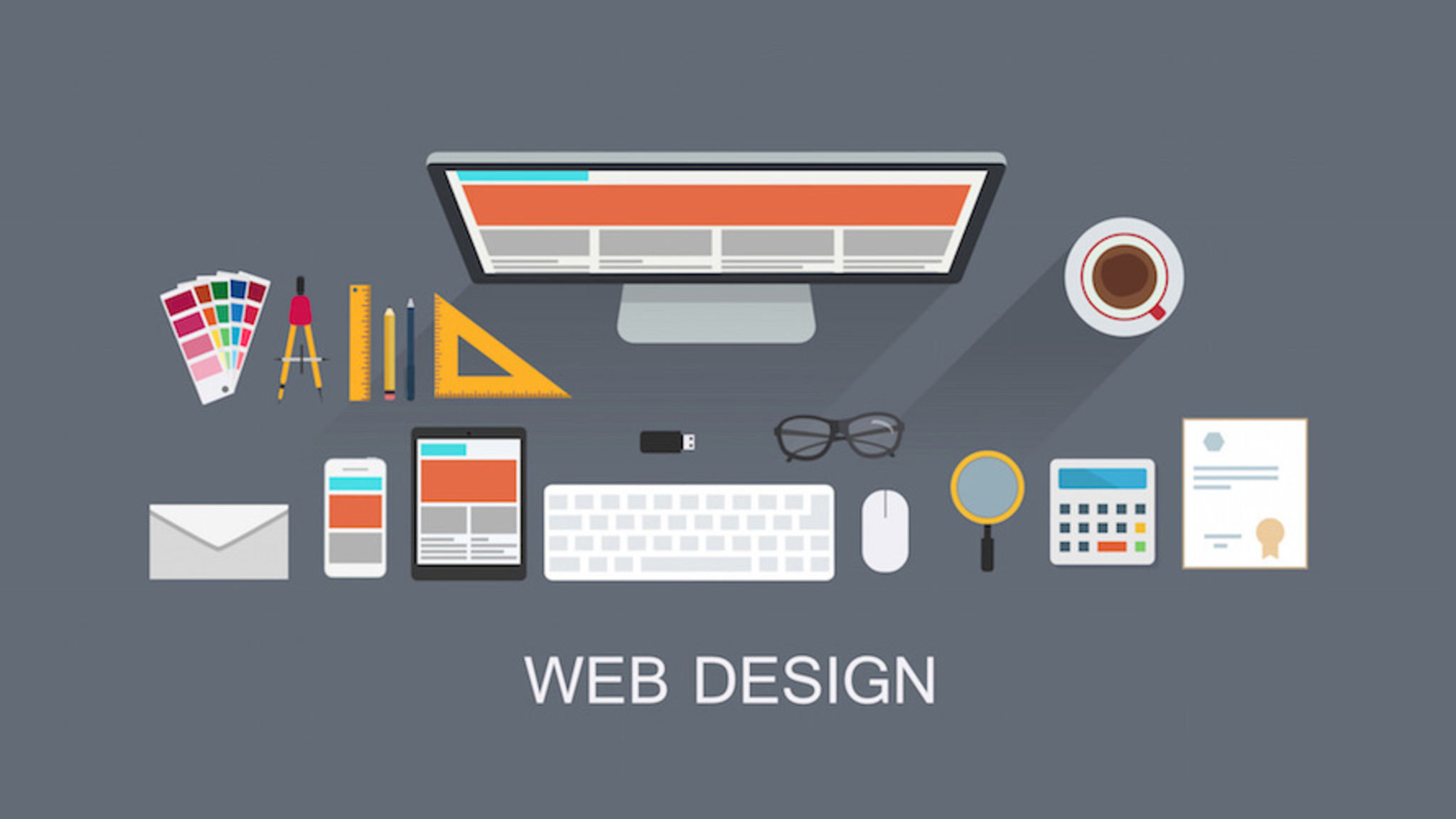All Categories
Featured
Table of Contents
- – Law Firm Website Design, Attorney Web Design, ...
- – Design Principles - U.s. Web Design System (U...
- – The Top Ecommerce, Website Design ... - Seatt...
- – Why Web Design Is Dead - - Ux Magazine Tips a...
- – Web Design Studio & Digital Marketing Agency ...
- – Law Firm Website Design, Attorney Web Design,...
- – Web Design Courses & Tutorials - Codecademy ...
- – Responsive Web Design Certification - Freeco...
- – Otc Web Design Girdwood, Alaska - Web Design...
- – Web Design Services - Verizon Small Business...
- – Awwwards - Website Awards - Best Web Design ...
Law Firm Website Design, Attorney Web Design, Lawyer ... Tips and Tricks:
Quick summary Usability and the utility, not the visual design, figure out the success or failure of a website. Considering that the visitor of the page is the only person who clicks the mouse and therefore chooses everything, user-centric design has developed as a basic method for effective and profit-oriented website design - web design frederick md.
and the utility, not the visual design, determine the success or failure of a website. Given that the visitor of the page is the only individual who clicks the mouse and therefore chooses everything, user-centric style has actually become a standard approach for successful and profit-oriented web style. If users can't utilize a feature, it might as well not exist.
g. where the search box should be positioned) as it has actually already been carried out in a variety of articles; rather we concentrate on the methods which, used correctly, can result in more advanced design decisions and streamline the process of viewing provided information. Please observe that you might be interested in the usability-related articles we have actually released before: Concepts Of Good Site Design And Efficient Website Design Guidelines, In order to utilize the principles effectively we first need to understand how users communicate with sites, how they think and what are the standard patterns of users' behavior.
Design Principles - U.s. Web Design System (Uswds) Tips and Tricks:
Visitors glance at each new page, scan a few of the text, and click the very first link that catches their interest or vaguely looks like the important things they're searching for. In fact, there are big parts of the page they don't even look at. A lot of users browse for something intriguing (or beneficial) and clickable; as quickly as some promising candidates are discovered, users click.
If a page provides users with premium material, they want to compromise the material with advertisements and the design of the site. This is the reason that not-that-well-designed websites with premium material gain a great deal of traffic over years. Material is more crucial than the design which supports it.

Users do not read, they scan. Notice how "hot" areas abrupt in the middle of sentences. This is typical for the scanning process. Very simple principle: If a website isn't able to meet users' expectations, then designer failed to get his job done correctly and the company loses money. The greater is the cognitive load and the less instinctive is the navigation, the more prepared are users to leave the website and search for options.
The Top Ecommerce, Website Design ... - Seattle Tips and Tricks:
Neither do they scan webpage in a linear fashion, going sequentially from one site area to another one. Rather users satisfice; they pick the first sensible alternative. As soon as they discover a link that appears like it might cause the objective, there is a great opportunity that it will be right away clicked.
It does not matter to us if we comprehend how things work, as long as we can use them. If your audience is going to act like you're designing billboard, then design great signboards." Users desire to be able to manage their browser and depend on the constant information discussion throughout the website.
If the navigation and site architecture aren't user-friendly, the number of enigma grows and makes it harder for users to understand how the system works and how to get from point A to point B. A clear structure, moderate visual hints and easily identifiable links can help users to find their course to their aim.
Why Web Design Is Dead - - Ux Magazine Tips and Tricks:

claims to be "beyond channels, beyond products, beyond distribution". What does it mean? Because users tend to explore sites according to the "F"-pattern, these three declarations would be the very first components users will see on the page once it is packed. The design itself is basic and user-friendly, to understand what the page is about the user needs to search for the response.
As soon as you've attained this, you can communicate why the system is beneficial and how users can benefit from it. Don't Misuse Users' Patience, In every project when you are going to provide your visitors some service or tool, attempt to keep your user requirements very little.
Novice visitors want to, not filling long web forms for an account they might never ever utilize in the future. Let users check out the site and find your services without requiring them into sharing private data. It's not reasonable to force users to go into an email address to check the feature.
Web Design Studio & Digital Marketing Agency • Gravitate Tips and Tricks:
And that's what you want your users to feel on your web site. The registration can be done in less than 30 seconds as the form has horizontal orientation, the user does not even require to scroll the page.
A user registration alone is adequate of an obstacle to user navigation to cut down on inbound traffic. Manage To Focus Users' Attention, As sites provide both static and vibrant material, some aspects of the user interface draw in attention more than others do.
Focusing users' attention to particular locations of the website with a moderate use of visual components can help your visitors to get from point A to point B without thinking about how it really is supposed to be done. The less enigma visitors have, the they have and the more trust they can develop towards the company the site represents.
Law Firm Website Design, Attorney Web Design, Lawyer ... Tips and Tricks:
Strive For Function Exposure, Modern web styles are generally slammed due to their technique of assisting users with aesthetically appealing 1-2-3-done-steps, large buttons with visual effects etc. From the design point of view these aspects in fact aren't a bad thing.
The site has 9 main navigation options which show up at the first look. The choice of colors may be too light. is a basic principle of successful user interface design. It does not truly matter how this is attained. What matters is that the content is well-understood and visitors feel comfy with the way they interact with the system.
Instead a rate: simply what visitors are looking for. An ideal service for efficient writing is touse short and concise phrases (come to the point as rapidly as possible), usage scannable design (categorize the content, use numerous heading levels, use visual aspects and bulleted lists which break the circulation of uniform text blocks), usage plain and unbiased language (a promo does not need to sound like advertisement; give your users some reasonable and unbiased reason why they ought to utilize your service or remain on your site)6.
Web Design Courses & Tutorials - Codecademy Tips and Tricks:
Users are hardly ever on a site to enjoy the style; moreover, for the most part they are looking for the information regardless of the design - web design frederick md. Pursue simplicity instead of intricacy. From the visitors' perspective, the very best site design is a pure text, with no ads or further content blocks matching exactly the question visitors used or the content they have actually been searching for.
Finch clearly presents the details about the site and provides visitors an option of choices without overcrowding them with unneeded material. Not just does it assist to for the visitors, but it makes it possible to view the info presented on the screen.
Complex structures are more difficult to read, scan, analyze and work with. If you have the option in between separating two style segments by a noticeable line or by some whitespace, it's generally much better to use the whitespace option. (Simon's Law): the better you manage to offer users with a sense of visual hierarchy, the simpler your material will be to perceive.
Responsive Web Design Certification - Freecodecamp.org Tips and Tricks:
The very same conventions and rules need to be used to all elements.: do the most with the least amount of cues and visual aspects. 4 major points to be considered: simpleness, clarity, distinctiveness, and emphasis. Simpleness includes just the elements that are essential for interaction. Clarity: all components need to be created so their meaning is not unclear.
Conventions Are Our Good friends, Traditional design of site elements doesn't result in an uninteresting web site. It would be a functionality problem if all sites had different visual discussion of RSS-feeds.
comprehend what they're anticipating from a site navigation, text structure, search placement etc. A case in point from usability sessions is to translate the page in Japanese (assuming your web users do not understand Japanese, e. g. with Babelfish) and provide your functionality testers with a job to discover something in the page of various language.
Otc Web Design Girdwood, Alaska - Web Design & Google ... Tips and Tricks:
Steve Krug suggests that it's better to, but take advantages of conventions when you don't. 10. Test Early, Test Typically, This so-called TETO-principle must be used to every web design job as usability tests often provide into substantial issues and concerns related to an offered layout. Test not too late, not too little and not for the wrong reasons.
Some important points to bear in mind: according to Steve Krug, and testing one user early in the job is better than testing 50 near the end. Accoring to Boehm's very first law, mistakes are most regular throughout requirements and design activities and are the more costly the later on they are removed.
That indicates that you design something, test it, fix it and then test it once again. There may be issues which have not been discovered during the preliminary as users were almost blocked by other issues. usability tests. Either you'll be indicated the problems you have or you'll be pointed to the absence of significant style flaws which is in both cases an useful insight for your task.
Web Design Services - Verizon Small Business Essentials Tips and Tricks:

This holds for designers. After you have actually dealt with a website for few weeks, you can't observe it from a fresh perspective any longer. You understand how it is developed and for that reason you know precisely how it works you have the knowledge independent testers and visitors of your site wouldn't have.
It can be linked to other locations such as graphic style, user experience, and multimedia arts, however is more aptly seen from a technological perspective. It has actually become a large part of individuals's daily lives. It is tough to envision the Web without animated graphics, different styles of typography, background, videos and music.

During 1991 to 1993 the World Wide Web was born. Text-only pages might be viewed utilizing a simple line-mode internet browser. In 1993 Marc Andreessen and Eric Bina, developed the Mosaic web browser. At the time there were several web browsers, however the majority of them were Unix-based and naturally text heavy. There had actually been no integrated approach to graphic design elements such as images or noises.
Awwwards - Website Awards - Best Web Design Trends Tips and Tricks:
The W3C was produced in October 1994 to "lead the Web to its full potential by developing common protocols that promote its development and guarantee its interoperability." This dissuaded any one business from monopolizing a propriety internet browser and shows language, which could have altered the impact of the World Wide Web as a whole.
As this has taken place the innovation of the web has actually likewise proceeded. There have actually also been considerable changes in the way people use and access the web, and this has actually changed how websites are designed. Considering that completion of the internet browsers wars [] brand-new internet browsers have actually been launched. A number of these are open source meaning that they tend to have much faster development and are more supportive of brand-new requirements.
Learn more about Lovell Media Group LLC or TrainACETable of Contents
- – Law Firm Website Design, Attorney Web Design, ...
- – Design Principles - U.s. Web Design System (U...
- – The Top Ecommerce, Website Design ... - Seatt...
- – Why Web Design Is Dead - - Ux Magazine Tips a...
- – Web Design Studio & Digital Marketing Agency ...
- – Law Firm Website Design, Attorney Web Design,...
- – Web Design Courses & Tutorials - Codecademy ...
- – Responsive Web Design Certification - Freeco...
- – Otc Web Design Girdwood, Alaska - Web Design...
- – Web Design Services - Verizon Small Business...
- – Awwwards - Website Awards - Best Web Design ...
Latest Posts
Web Design Definition - Techterms Tips and Tricks:
Arch Web Design: Top-rated Web Design Agency For Saas ... Tips and Tricks:
Collaborate & Create Amazing Graphic Design For Free Tips and Tricks:
More
Latest Posts
Web Design Definition - Techterms Tips and Tricks:
Arch Web Design: Top-rated Web Design Agency For Saas ... Tips and Tricks:
Collaborate & Create Amazing Graphic Design For Free Tips and Tricks: